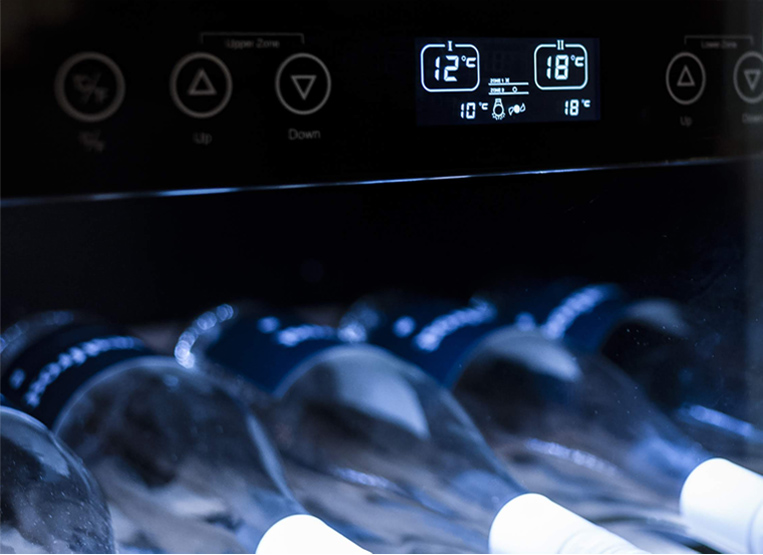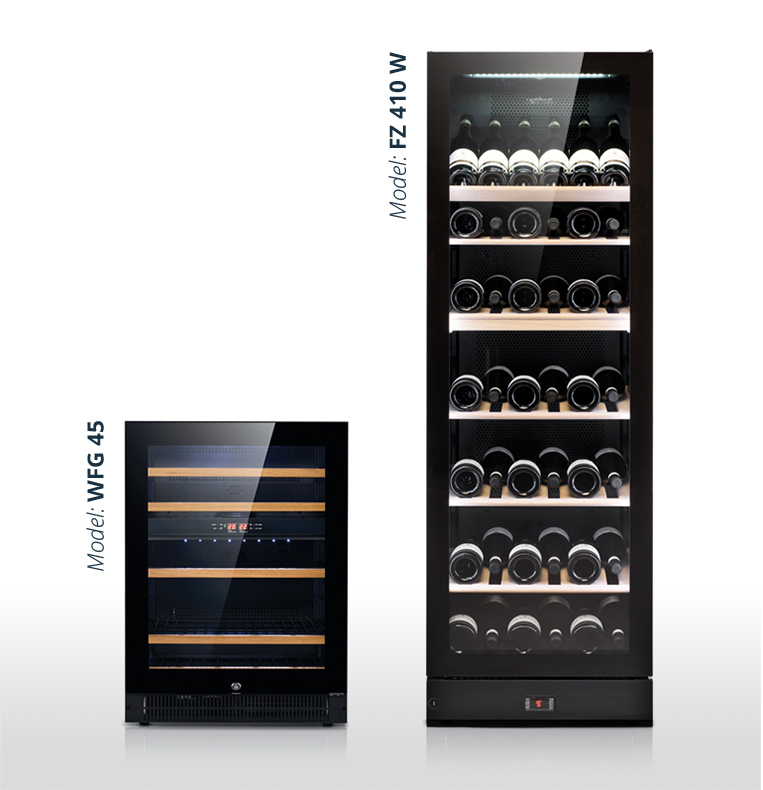
In many Polish restaurants and homes white wines are served too cold and red wines too warm. While the former will warm up quickly in the glass to attain the right temperature, in the case of the latter the problem will not solve itself! When too warm, red wines lose their freshness and aroma; their taste is overpowered by alcohol. Many people don’t know that red wines should also be cooled before serving – obviously not as much as whites, but it is important to remember about it. Responsible for this state of affairs is probably the widespread cliché that wine, in particular red, ought to be served at… room temperature! You could not be more wrong.
Room temperature
The expression dates back to the era before central heating, when temperatures inside houses did not exceed 15°C. It may be ideal for wine, yet far less comfortable for humans and nobody lives in such conditions today. The temperature in most houses is beyond 20°C throughout the year, which means that red wine must be cooled before serving. The question is, though, how should one go about it? The simplest solution – putting the bottle in the fridge – turns out not to be the best one. To cool wine properly, the space inside of the refrigerator must not be too limited and, above all, it should not be too cold. The more we learn to appreciate wine and enjoy tasting it, the more attention we pay to details that affect its quality. As we reach for ‘nobler’ bottles, we want to make sure the wine is not only served at the right temperature, but also in quality glassware and that it is stored in appropriate conditions. Specialty wine coolers come to our rescue.

This is how you serve wine
A wine cooler usually has two or more temperature zones. You can set them to match the needs of different wines from your collection. Whites and rosés should be stored on shelves where the temperature is lower, while the compartment with the ‘room’ temperature of a medieval chamber will be ideal for your reds. Even if you decide to go for a smaller model, such as the WFG 45 that fits under the kitchen countertop, you can set two temperature ranges and serve your favourite wine at the right temperature whenever you need or feel like it.
This is how you store wine safely and conveniently
If you have a slightly larger supply of wine, say, over a dozen or several dozen bottles, it is also worth considering other parameters that determine the quality and durability of the stored wine. Remember that not only temperature is important, but also fresh, cool and humid air, as well protection from light, other aromas and vibrations. Unlike a regular fridge, a wine cooler takes care of all of the above. It is the only device that guarantees adequate wine storage conditions, similar to those of a wine cellar. It is particularly important if your wine collection grows, acquires a certain value, and storage time is counted in years, not months.
This is how you collect wine (if you don’t have a wine cellar)
A larger wine cooler, such as the multi-zone FZ410W model holding as many as 200 bottles, is an appliance for serious wine collectors. It can be set to a single, constant temperature, or divided into several zones: the lowest temperature at the bottom, e.g. 6°C for sparkling wine, the highest at the top, i.e. 18°C for the noblest bottles of red; the middle shelves with an average resultant temperature are ideal for whites, rosés and light reds. The temperature of the middle zone is controlled with the use of a shelf thermometer. In the case of this wine cooler, comfort goes hand in hand with aesthetics: tinted glass with UV filter, discreet LED lighting and oak shelves. White wines are particularly at risk when exposed to sunlight, as it adversely affects their colour. Oak, which is the wood of wine barrels, absorbs vibrations and maintains the right humidity level. The carbon filter ensures appropriate air quality. As it matures, wine releases compounds that penetrate through the cork and can have a negative impact on wines stored next to it, which absorb these compounds through their cork. This is another advantage of having a wine cooler: you can rest assured that your valuable bottles are not stored next to onions, sausages or smoked fish, and exposed to any undesirable aromas. Wine coolers are equipped with insulated compressors – different from those installed in fridges – that perfectly dampen vibrations and are supported by an additional heating unit that maintains the right storage conditions in the event of a drop in ambient temperature. Your wine is safe for years, even if having a real wine cellar remains, at least for now, a pipe dream.
Marcin Zatorski
